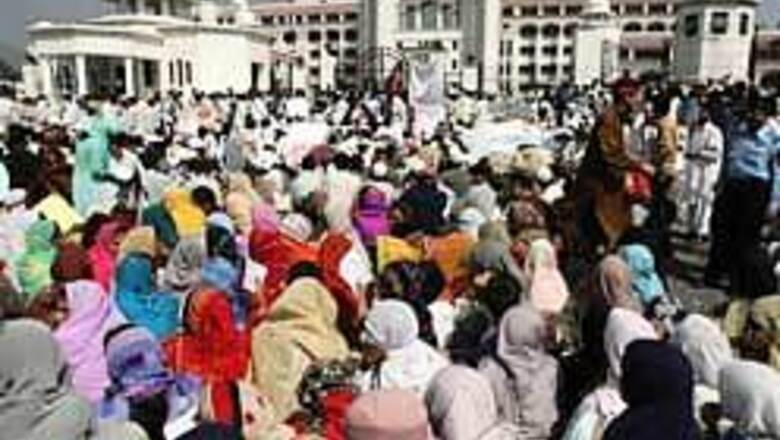
views
Muzaffarabad (Pakistan): Ten-year-old Saima Khursheed sobbed in a dusty office full of prosthetic limbs, hurt and angry that she must have a plastic replacement for her right leg, amputated after it was crushed by a boulder.
Saima lost the limb when a landslide buried the tent camp where she and her family moved after the October 8, 2005, earthquake that devastated the Pakistan-controlled portion of Kashmir.
''Mother! I don't need this plastic leg! I want my real leg back!'' she cried during an appointment with the Pakistani charity Hope. Her mother and an aid worker tried to console her. After all, Saima is relatively lucky.
Many of the 2,000 children who lost limbs, fingers or toes in the earthquake or its aftermath are still waiting for prosthetics, and funding is scarce. Private charities are the main source of donations.
Saima's family escaped unhurt from the 7.6 magnitude quake, which killed 80,000 people and left more than 3 million homeless. But their home in the Jehlum Valley town of Hattian Bala was destroyed.
The family walked for four days to the hillside village of Chaila near Muzaffarabad, the capital of Pakistani Kashmir, where aid workers had started building a tent camp. Despite losing their home, the family was relatively content, living in a tent and relying on donated food.
But in July, monsoon rains unleashed a torrent of soil, mud and boulders onto their camp. Saima's father and 11-year-old brother were killed. Saima was pinned under a boulder, her right leg crushed.
''I waited for the funeral of my husband and son, and three days later took her to a hospital where doctors cut off her leg after telling me it was unavoidable,'' said Musarat Bibi, 38, as she consoled her daughter. Saima is due to have a prosthetic limb fitted once her stump heals.
Qazi Zahid, a worker for the charity Hope who lost his own right leg in a 2001 earthquake, tried to reassure the sobbing girl. ''You will surely walk like me,'' he told her.
Another charity that has offered prosthetic limbs for children is Jamaat-ud-Dawa, which the US government says is a cover for Lashkhar-e-Toiba, an outlawed Islamic militant group fighting Indian forces in the India-controlled Kashmir.
Shortly after the October 8 quake, Jamaat-ud-Dawa set up relief camps, provided shelter, food and medical help for the overwhelming number of people left homeless and injured. A hospital run by the charity offered to provide Saima a prosthetic leg, but her family accepted an earlier offer from Hope.
Private philanthropists have also stepped in to help. Zeeshan Shah, 9, had his left arm amputated after it was crushed by a beam in his uncle's home in the quake. He had been playing with his 13-year-old brother, who died under the rubble.
Zeeshan was taken to a hospital in Islamabad, Pakistan's capital, where doctors amputated his arm.
''It was the most painful moment when I saw my son without his arm,'' his father, Sabir Shah, told The Associated Press. ''After opening his eyes, my son also cried nonstop.''
The boy was among 43 children at the hospital whose limbs were amputated after the earthquake, said Zaheer Abbasi, the hospital's chief surgeon. ''Yes, amputations are very traumatic, but life is more important than a limb,'' said Abbasi.
After Zeeshan returned to Kashmir, an AP photo of the boy having his wound dressed at an army field hospital drew the attention of German philanthropist Sylvia Eidl. She flew to Pakistan to find Zeeshan and take him and his father to the Italian city of Bologna, where the boy was fitted with a prosthetic arm.
Zeeshan, who returned home September 17, said he was happy with his new limb. ''I can do things now. I can hold a school notebook in my hand and do other work,'' he told the AP in his small village of Noorseri.
Zeeshan's parents still help him dress and comb his hair for school, but they hope he will be able to support himself in the future. ''I hope, God willing, he will be all right and able to study,'' said Shah.




















Comments
0 comment